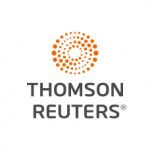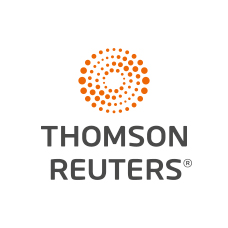Industry analysis from Thomson Reuters: US market insight
This blog post was also featured as an industry analysis piece in the July 2016 issue of Briefing. To read the issue in full, download Briefing.
The 2016 State of the Legal Market report, a collaboration between Thomson Reuters Peer Monitor and the Georgetown Law Center for the Study of the Legal Profession, posited that large law firms in the USA may well be facing their proverbial ‘Kodak moment’. Demand throughout the legal industry remained flat for most of 2015, but alternative providers continue to bloom.
Unequal animals
Regardless of the increasing pool of potential threats, the first quarter of 2016 actually saw market forces take a bit of a positive turn. For the first time in a year and a half, there are positive indicators of client demand, the rates firms are able to charge, firms’ ability to control costs, and indeed, lawyer productivity.
But while this is encouraging, not all segments are equal. 2015 was a successful year for the largest of large firms, but only moderately so. Am Law 100 firms saw modest gains in gross revenue, revenue per lawyer and profits per equity partner. But examination of early results for 2016 indicates that the road ahead could be rougher. Demand and fees for work grew in the first quarter of the year, but at slower rates than in the first quarter of 2015. And productivity for the first quarter was down 1.7%, the largest year-on-year decline of any segment in the past three years.
Stronger success was visible among mid-size firms, which seem to have found a point of balance between demand and growth in lawyer numbers, helping to alleviate some of the pressure on productivity plaguing firms of all sizes. Indeed, demand growth of 2% exactly matched 2% lawyer growth for the quarter. And while still negative, productivity outperformed the other segments.
Nor are trends in the mid-size market limited to this quarter. These firms have seen steady improvement across almost all key metrics, progress just not seen in other segments. Firstquarter demand has grown from -0.7% in 2014 to 2% this year. Fees worked have also grown, leading to a slowing decline in productivity.
In stark contrast, the Am Law Second 100 has seen its fortunes reverse. In the first quarter of 2014, they saw industry-leading demand growth, but that rate of growth slowed dramatically before finally ending up in negative territory in 2016. The group has slid down to last place among segments.
Rates of change
Demand growth isn’t the only reason the market should be attentive to mid-size firms. While demand and fees worked have been growing, growth in rates charged is slowing. Worked rates grew at 2.6% in the first quarter of 2014, followed by 2.1% in 2015, and just 2% in 2016.
But slowed rate growth doesn’t seem to have had a detrimental effect on performance. This was the only segment to see annual improvement in first-quarter revenue and cash collections. Revenue grew at a strong 6.2%, cash at 5.3%.
Larger firms (the Am Law Second 100) held the line at 3% first-quarter rate growth for each of the last three years. While steady, however, this hasn’t translated into stronger revenues or cash collections. The first quarter of 2015 saw Second 100 revenues grow at 2.3% compared to the previous year. But after another year of holding rates, revenues declined by 0.7%. Similarly, the segment grew cash collection by 3.2% in the first quarter of 2015, but only managed 0.9% in 2016.
Both segments do seem to have budged a bit in response to continued client pressure to reduce rates. Granted, rates are still growing, but for both segments that rate of growth has slowed.
It’s difficult to say that the demand growth in both is due to recognition of client price sensitivity, but it’s a correlation worth noting.
Spending power
Another to watch is the relationship between expenses and performance. It’s often said, after all, that business priorities are reflected in the budget.
It seems apparent that smaller firms have placed a priority on upgrading their technology. Spending on technology by mid-size firms saw the second highest rate of growth among any tracked expense metric in the first quarter of 2016 (only trailing recruitment, which is also much more volatile).
But the Am Law 100 is also focused on technology. These firms currently spend about $23,600 per lawyer on technology, up 2.8% from the previous year. The Am Law Second 100 still dedicates a fair amount to IT, but it grew that figure at only 1.1% over the previous year.
So are Second 100 firms increasing tech spend at a slower rate because of declines in fees worked and revenues, or are fees and revenues declining because they’re falling behind on technology? The truth may be a little bit of both – but Peer Monitor’s technology survey in January quite clearly showed that firms with better financial performance tend to be those that have adopted certain technology enhancements.
Clients continue to push firms not only to recognise increasing rate sensitivity, but also desire for greater efficiency and predictability from outside counsel. Investment in technology may well be interpreted as an effort in this regard.
Comparison with Kodak is intended neither as a prediction of an impending certainty, nor an existential threat to the practice of law. But it should serve as a cautionary tale to large firms that even the most stable of businesses isn’t immune from competition, including from startups.
It’s impossible to state with certainty that adjustments to rate growth and expenses are the root cause of success, but business as usual is certainly not an option



